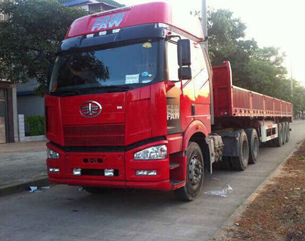物流公司可按照不同的標(biāo)準(zhǔn),可作不同的分類.那么,根據(jù)物流的發(fā)展進(jìn)程,所以將物流分為傳統(tǒng)物流、綜合物流和現(xiàn)代物流三大類,下面就跟小編來了解下吧.
Logistics companies can be classified according to different standards. According to the development process of logistics, logistics can be divided into three categories: traditional logistics, integrated logistics and modern logistics.
傳統(tǒng)物流的主要精力集中在倉儲(chǔ)和庫存的管理和派送上,而有時(shí)又把主要精力放在倉儲(chǔ)和運(yùn)輸方面,以彌補(bǔ)在時(shí)間和空間上的差異.
Traditional logistics mainly focuses on storage and inventory management and distribution, and sometimes focuses on warehousing and transportation to make up for differences in time and space.
綜合物流不僅提供運(yùn)輸服務(wù),還包括許多協(xié)調(diào)工作,是對整個(gè)供應(yīng)鏈的管理,如對陸運(yùn)、倉儲(chǔ)部門等一些分銷商的管理,還包括訂單處理、采購等內(nèi)容.由于很多精力放在供應(yīng)鏈管理上,責(zé)任更大,管理也更復(fù)雜,這是與傳統(tǒng)物流的區(qū)別.
Integrated logistics not only provide transportation services, including many coordination of the entire supply chain management, such as management of transportation, warehousing department and some other distributors, including order processing, procurement and so on. Because of a lot of focus on the supply chain management, more responsibility, management is more complex, this is the difference between with the traditional logistics.
現(xiàn)代物流是為了滿足消費(fèi)者需要而進(jìn)行的從起點(diǎn)到終點(diǎn)的原材料、中間過程庫存、最終產(chǎn)品和相關(guān)信息有效流動(dòng)及儲(chǔ)存計(jì)劃、實(shí)現(xiàn)和控制管理的過程.它強(qiáng)調(diào)了從起點(diǎn)到終點(diǎn)的過程,提高了物流的標(biāo)準(zhǔn)和要求,是各國物流的發(fā)展方向.
Modern logistics is the process in order to meet the needs of the consumers from the starting point to the end point of the raw materials, in-process inventory, effective flow of final products and related information and storage plan, implement and control management. It emphasizes the process from the starting point to the end point, improve the logistics standards and requirements, is the development direction of national logistics.
國際上大型物流公司認(rèn)為現(xiàn)代物流有兩個(gè)重要功能:能夠管理不同貨物的流通質(zhì)量;開發(fā)信息和通訊系統(tǒng),通過網(wǎng)絡(luò)建立商務(wù)聯(lián)系,直接從客戶處獲得訂單.
Internationally speaki |
